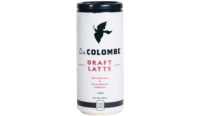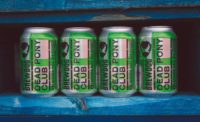Pilot facilities simulate products prior to commercial development

Being first to market with a new innovation is critical for success in today's high volume, fast-moving marketplace. But when it comes to new products, they must also be rigorously tested to make sure they adhere to the highest standards. In the beverage segment, lengthy testing processes can delay product development, as they occupy valuable line time and slow production. To help customers overcome these challenges, can manufacturers offer access to fully-equipped pilot facilities.
Pilot facilities are essentially satellite locations or off-line environments that are intended to design and simulate customers’ products prior to commercial development of their packaging. The overarching purpose of these facilities, along with the use of computer aided design (CAD) and modeling, is to enable brands to greatly reduce packaging development time while increasing the success rate of new products in the market. In order to achieve this, extensive testing is conducted on new packaging in an environment that is designed to replicate the conditions in which packages are filled, processed, used and ultimately handled by customers.
The primary function of the pilot press, or the mock production line at the facilities, is to allow customers to refine their colors, help designers and separators to make any final adjustments, and to provide each plant with a color match target and to trial breakthrough ink innovations – all prior to commercial production. Allowing customers to refine their colors in this environment provides a prototype of what the final production can will look like. It also affords the customer the opportunity to see the can in its completed form with their selected colors side-by-side.
From the designers and separators side, pilot facilities provide an opportunity to make any last modifications prior to commercial production. Designers and separators are able to adjust the color separation, which is a proof of the customers’ original artwork, to make it print ready. While it can be a challenge to achieve exactly what the customer desires in terms of visuals, the pilot facilities afford the separator a chance to see what works and what the final product will look like.
In addition to providing the customer with an example of the product and the separators with a chance to match their needs, the pilot press also provides plants with a color match target. This offers an occasion to closely match customers’ requests. By doing so, the color matching process does not have to be altered on the commercial production line if the customer elects to change the colors, which saves valuable time. The pilot press also allows customers to trial ink innovations and other new technologies. For example, certain finishes such as matte or tactile lend products a unique tangible quality, and these facilities allow customers to see the attractive characteristics on the can for the first time.
As a leader in metal packaging products worldwide, Crown (crowncork.com) has grown its business by providing exceptional customer service, with pilot facilities in Wantage, UK, and Alsip, Illinois and a pilot press in Cheraw, South Carolina. Crown can take a customer’s beverage product and fill them in cans, testing and simulating how they are expected to perform in the market, exploring their potential shelf life and examining what warranty would apply. Crown proactively approaches customers, using their chosen artwork and design, to depict renderings and actual product mock-ups on beverage cans including the range of sleek cans in 7.5, 10 or 12-ounce sizes.
Providing the customer with a tangible trial product allows them to actually see what their graphics look like on a can for the first time. For example, At Crown’s Wantage pilot facility, customers are able to not only see their vision come from fruition prior to commercial development, but also take away the mock-ups as a reference to share with other employees internally. Access to pilot facilities is available to all of Crown’s customers.
Crown, who has the largest research and development staff in the industry contributing to these facilities – including chemists, microbiologists, finite element modelists and mechanical engineers – is able to test and evaluate each new innovation that is employed at the pilot facilities.
Pilot facilities are designed to enhance and test metal packaging products and printing technologies. They allow customers to greatly reduce packaging development line time by evaluating the product or new innovation in a fault-free environment in order to increase their success rate in the marketplace.
As a result of leveraging Crown’s pilot facilities, the Company has made numerous patented advancements in packaging products and manufacturing technologies and continues to work with its customers to refine their products and in an effort to ensure only the highest quality cans reach store shelves. Crown’s efforts have earned the recognition of The International Metal Decorators Association (IMDA) in partnership with craft brewers for their collaborative graphics. In fact, in 2015 the IMDA’s top honor was granted to Crown for print quality, ink laydown and registration in production of Mother Earth Brew Co.’s HONCHO Hefeweizen beer.
Looking for a reprint of this article?
From high-res PDFs to custom plaques, order your copy today!







